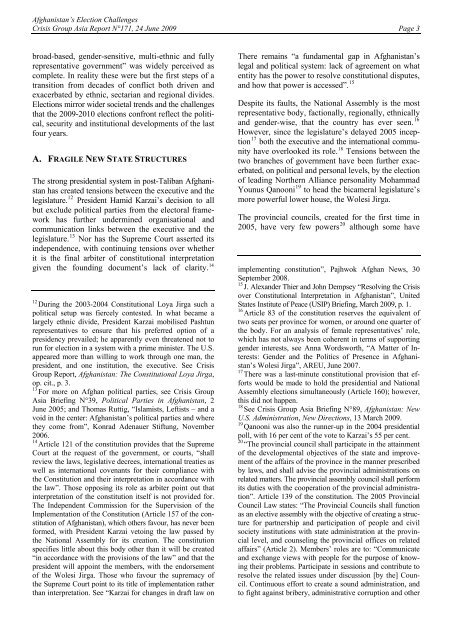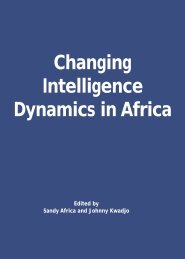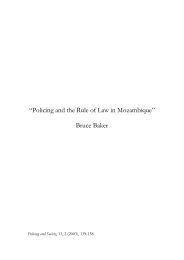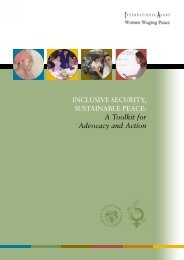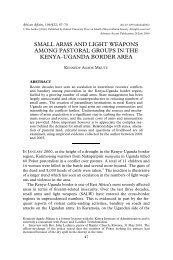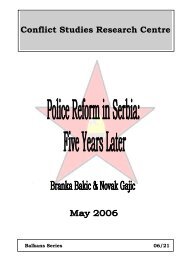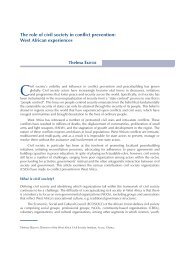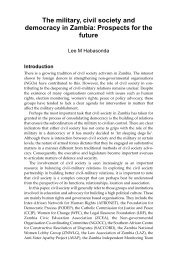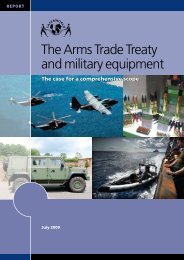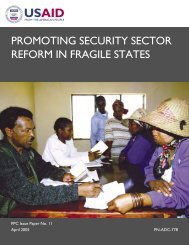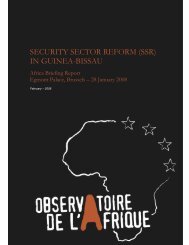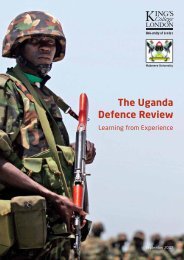AFGHANISTAN'S ELECTION CHALLENGES
AFGHANISTAN'S ELECTION CHALLENGES
AFGHANISTAN'S ELECTION CHALLENGES
You also want an ePaper? Increase the reach of your titles
YUMPU automatically turns print PDFs into web optimized ePapers that Google loves.
Afghanistan’s Election Challenges<br />
Crisis Group Asia Report N°171, 24 June 2009 Page 3<br />
broad-based, gender-sensitive, multi-ethnic and fully<br />
representative government” was widely perceived as<br />
complete. In reality these were but the first steps of a<br />
transition from decades of conflict both driven and<br />
exacerbated by ethnic, sectarian and regional divides.<br />
Elections mirror wider societal trends and the challenges<br />
that the 2009-2010 elections confront reflect the political,<br />
security and institutional developments of the last<br />
four years.<br />
.<br />
A. 6FRAGILE NEW STATE STRUCTURES<br />
The strong presidential system in post-Taliban Afghanistan<br />
has created tensions between the executive and the<br />
legislature. 12 President Hamid Karzai’s decision to all<br />
but exclude political parties from the electoral framework<br />
has further undermined organisational and<br />
communication links between the executive and the<br />
legislature. 13 Nor has the Supreme Court asserted its<br />
independence, with continuing tensions over whether<br />
it is the final arbiter of constitutional interpretation<br />
given the founding document’s lack of clarity. 14<br />
12 During the 2003-2004 Constitutional Loya Jirga such a<br />
political setup was fiercely contested. In what became a<br />
largely ethnic divide, President Karzai mobilised Pashtun<br />
representatives to ensure that his preferred option of a<br />
presidency prevailed; he apparently even threatened not to<br />
run for election in a system with a prime minister. The U.S.<br />
appeared more than willing to work through one man, the<br />
president, and one institution, the executive. See Crisis<br />
Group Report, Afghanistan: The Constitutional Loya Jirga,<br />
op. cit., p. 3.<br />
13 For more on Afghan political parties, see Crisis Group<br />
Asia Briefing N°39, Political Parties in Afghanistan, 2<br />
June 2005; and Thomas Ruttig, “Islamists, Leftists – and a<br />
void in the center: Afghanistan’s political parties and where<br />
they come from”, Konrad Adenauer Stiftung, November<br />
2006.<br />
14 Article 121 of the constitution provides that the Supreme<br />
Court at the request of the government, or courts, “shall<br />
review the laws, legislative decrees, international treaties as<br />
well as international covenants for their compliance with<br />
the Constitution and their interpretation in accordance with<br />
the law”. Those opposing its role as arbiter point out that<br />
interpretation of the constitution itself is not provided for.<br />
The Independent Commission for the Supervision of the<br />
Implementation of the Constitution (Article 157 of the constitution<br />
of Afghanistan), which others favour, has never been<br />
formed, with President Karzai vetoing the law passed by<br />
the National Assembly for its creation. The constitution<br />
specifies little about this body other than it will be created<br />
“in accordance with the provisions of the law” and that the<br />
president will appoint the members, with the endorsement<br />
of the Wolesi Jirga. Those who favour the supremacy of<br />
the Supreme Court point to its title of implementation rather<br />
than interpretation. See “Karzai for changes in draft law on<br />
There remains “a fundamental gap in Afghanistan’s<br />
legal and political system: lack of agreement on what<br />
entity has the power to resolve constitutional disputes,<br />
and how that power is accessed” 15<br />
Despite its faults, the National Assembly is the most<br />
representative body, factionally, regionally, ethnically<br />
and gender-wise, that the country has ever seen. 16<br />
However, since the legislature’s delayed 2005 inception<br />
17 both the executive and the international community<br />
have overlooked its role. 18 Tensions between the<br />
two branches of government have been further exacerbated,<br />
on political and personal levels, by the election<br />
of leading Northern Alliance personality Mohammad<br />
Younus Qanooni 19 to head the bicameral legislature’s<br />
more powerful lower house, the Wolesi Jirga.<br />
The provincial councils, created for the first time in<br />
2005, have very few powers 20 although some have<br />
implementing constitution”, Pajhwok Afghan News, 30<br />
September 2008.<br />
15 J. Alexander Thier and John Dempsey “Resolving the Crisis<br />
over Constitutional Interpretation in Afghanistan”, United<br />
States Institute of Peace (USIP) Briefing, March 2009, p. 1.<br />
16 Article 83 of the constitution reserves the equivalent of<br />
two seats per province for women, or around one quarter of<br />
the body. For an analysis of female representatives’ role,<br />
which has not always been coherent in terms of supporting<br />
gender interests, see Anna Wordsworth, “A Matter of Interests:<br />
Gender and the Politics of Presence in Afghanistan’s<br />
Wolesi Jirga”, AREU, June 2007.<br />
17 There was a last-minute constitutional provision that efforts<br />
would be made to hold the presidential and National<br />
Assembly elections simultaneously (Article 160); however,<br />
this did not happen.<br />
18 See Crisis Group Asia Briefing N°89, Afghanistan: New<br />
U.S. Administration, New Directions, 13 March 2009.<br />
19 Qanooni was also the runner-up in the 2004 presidential<br />
poll, with 16 per cent of the vote to Karzai’s 55 per cent.<br />
20 “The provincial council shall participate in the attainment<br />
of the developmental objectives of the state and improvement<br />
of the affairs of the province in the manner prescribed<br />
by laws, and shall advise the provincial administrations on<br />
related matters. The provincial assembly council shall perform<br />
its duties with the cooperation of the provincial administration”.<br />
Article 139 of the constitution. The 2005 Provincial<br />
Council Law states: “The Provincial Councils shall function<br />
as an elective assembly with the objective of creating a structure<br />
for partnership and participation of people and civil<br />
society institutions with state administration at the provincial<br />
level, and counseling the provincial offices on related<br />
affairs” (Article 2). Members’ roles are to: “Communicate<br />
and exchange views with people for the purpose of knowing<br />
their problems. Participate in sessions and contribute to<br />
resolve the related issues under discussion [by the] Council.<br />
Continuous effort to create a sound administration, and<br />
to fight against bribery, administrative corruption and other


